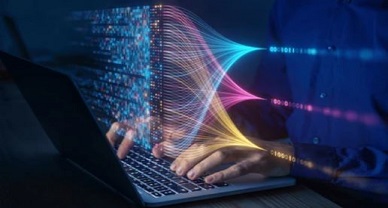Implications Of AI On Literary And Artistic Works : A Challenge On The Copyright System
To begin with, let’s understand what is Artificial Intelligence? Putting it simplistically, ‘Artificial intelligence’ or ‘AI’ is a term used to describe machines that can function without the assistance of a human being while still achieving the same outcome owing to the computer codes and algorithms on which they are based. The term was first devised by Sir John McCarthy in 1955, who identified Artificial Intelligence as “the engineering and science of producing machine intelligence” There are several applications of artificial intelligence-based technologies in use today. Three categories of AI have been identified and promoted by WIPO, namely ‘Expert Systems’, ‘Natural Language Systems’, and ‘Perception Systems’. Examples can range from including machines that can identify geological conditions, diagnose medical ailments, and also recommend grammatical adjustments for contextual semantic analysis.
How is then Artificial Intelligence related to Copyrights, with an added intricacy of Literary and artistic work? It is a notion held generally ‘AI can create.’ Applications of artificial intelligence (AI) are capable of independently creating literary and artistic creations. Any creator with an original piece of work is granted the exclusive rights to use and distribute it through a legal process known as ‘copyright’. For a Copyright to be granted, two conditions must typically be met. The first condition being that the work should be original and the second being that it should exist in a tangible form. Now, because one of the modern applications of AI is the production of literary works, the study of copyright considering AIs thus becomes essential.
Therefore, for the copyright system, which has historically been intricately linked to the human creative spirit and to respecting, rewarding, and encouraging the expression of human ingenuity, this capacity of AI, as explained above, creates significant policy issues.

A three-person Review Board of the US Copyright Office recently rejected a relatively recent copyright claim made by an individual by the name of Steven Thaler over an artwork titled ‘A Recent Entrance to Paradise’ produced using an AI-based algorithm he termed ‘Creative Machine’. In the past, CIRCA 2014, the ‘Creative Machine’, also known as DABUS (Device for the Autonomous Bootstrapping of Unified Sentience), was able to create artistic works made up of thousands of pictures using machine learning.
However, Reports of AI creating an artwork, say a painting in the above case, would be an oversimplification of the creative process. It has been on a public forum stated that the society could be “moving towards AI autonomy” and that in future, “AI would not only assist humans in the creative process but create or invent all by themselves”. Currently, nonetheless AI is not autonomous yet. In fact, to train advanced algorithms, AI systems rely heavily on developers, programmers, and data inputs via direct human involvement. The claim that an AI system can create literary and artistic works on its own misses out the premise that it would require source data to do so.
COPYRIGHT PROTECTION AND ARTIFICIAL INTELLIGENCE
Precisely the question, “Should copyright be ascribed to autonomously generated original literary and creative works by AI or should a human creator be needed?” causes uncertainty. The issue of who should be given credit for creating a piece of original work that was produced using AI technology would go unresolved if the question was answered, either positively or negatively. A significant problem is that the term ‘original’ used to describe works generated by AI may not actually mean ‘originality’ in the sense that we understand it in human sense.
Several Jurisdictions however, copyright ownership has already been granted to computer generated works. However, copyright ownership over computer-generated works has already been recognized in many jurisdictions. The UK, New Zealand, South Africa, Hong Kong, India, and Ireland are a few of these. Ownership rights in this case go to the person who sets up the apparatus necessary for the creation of the work.
Circling back to the example of the ‘Creativity Machine’ or DABUS, in which case the desired copyright claim over the work created by DABUS has been declined in the country of Origin, the US by the US Copyright Office; the same technology has been given protection under the jurisdiction of South Africa and Australia, where inventions made by the AI are protected by Intellectual Property.
Even if nations acknowledged providing copyrights to an AI’s creations, it is still unclear and impossible to understand who the rightful owner of those rights is. The ambiguity is true because, unless its creator is given that authority on its behalf, an AI lacks the ‘legal personality’ that existing law demands of a right holder. There is a loophole in the law, though, which concerns what would happen if the AI system had been purchased, and whether the buyer or the developer would receive the copyright. In nations like England and New Zealand, where the copyright in works created by artificial intelligence is granted to the programmer through legal fiction. Expanding the concept of copyright to encompass computer-generated works provides legal support for the same (the ones that lack a human author, i.e., AIs). This does not, however, still answer the question mentioned above.
CONCLUSION
The issue of who the law acknowledges for their contribution, the user of the program or its author remains unanswered considering this. This is analogous to questioning whether the maker of a pen or the writer should be granted copyright. Why therefore may the current ambiguity cause issues in the digital world? Let us talk about Microsoft Word. It is obvious that all the works written on ‘word computer programme’ created by Microsoft, are not owned by it. The user, or the author who used the programme to make their work, is the one who owns the copyright. However, when it comes to AI algorithms that can produce art, the user’s input to the creative process may be as simple as pressing a button to let the computer get to work. Artificial intelligence technology is no exception to the rule that the law lags behind technological advancements. We may anticipate a lot of legal activity worldwide to preserve the valuable innovations and other works that artificial intelligence produces as a result of human creation of the technology. Thaler’s ‘A Recent Entrance to Paradise’ controversy is just a way to introduce jurisprudence of artificial intellectual property law.
Author: Anushka Bharwani – a Student of Kirit. P. Mehta School of Law, NMIMS, Mumbai, in case of any queries please contact/write back to us at support@ipandlegalfilings.com or IP & Legal Filing.


